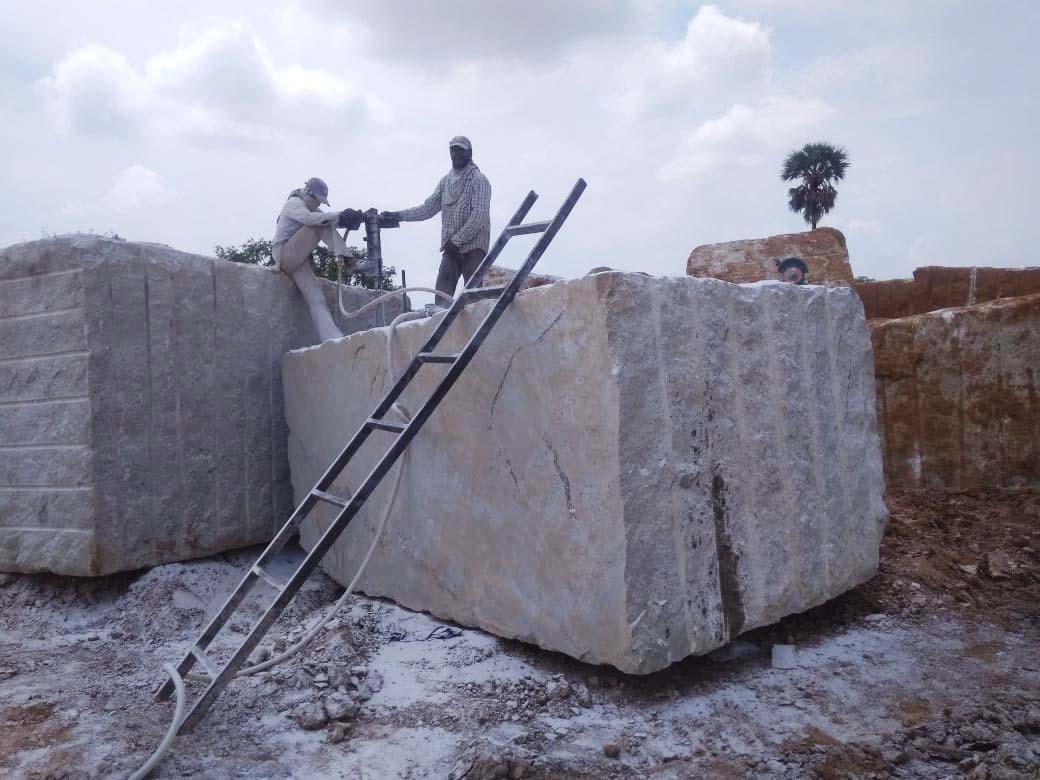Journeying Via Granite Quarries in South Africa: A Visual Odyssey
Wiki Article
Unveiling the Mysteries of Granite Quarrying: Where Strength and Sophistication Meet
The globe of granite quarrying is a world where the raw stamina of nature merges with human creativity to develop structures that stand the examination of time with an air of style. From the depths of quarries to the careful sprucing up in workshops, the process of transforming granite right into building wonders is a complex dancing of tradition and advancement. As we peer right into the midsts of this old craft, we start to uncover the hidden complexities that form the extremely significance of our constructed environment.The Beginnings of Granite Quarrying
In the record of building background, the beginnings of granite quarrying are shrouded in a tapestry of ancient craftsmanship and geological wonders. Dating back to old Egypt and Mesopotamia, the removal of granite from quarries noted the beginning of a journey that would ultimately result in the development of some of the world's most renowned frameworks.Granite quarrying's origins can be mapped to the competent artisans that acknowledged the stone's sturdiness and visual appeal. Via a combination of primitive devices and sheer resolution, these very early quarry employees discovered granite blocks that would end up being the building blocks of human beings.
As worlds advanced, so did the methods of quarrying granite. The Romans, renowned for their engineering prowess, developed sophisticated methods for drawing out granite to construct monuments, holy places, and roadways that stood the test of time.
The heritage of these old quarrying practices remains to shape modern-day design, with granite staying a symbol of stamina and elegance in construction projects around the globe. (granite quarries in south africa)
Tools of the Quarrying Trade
The evolution of granite quarrying methods from ancient worlds to contemporary times highlights the essential role played by the devices of the quarrying sell forming the industry's practices. In ancient times, quarrying devices were fundamental, often including knives, hammers, and wedges made from products like bronze or iron. These tools required considerable manpower and time to remove granite obstructs from quarries.
In addition, the introduction of pneumatically-driven devices and high-powered equipment has considerably decreased the physical labor required in quarrying procedures, boosting employee security and performance. As the quarrying industry continues to innovate, the tools of the profession stay at the center of driving progress and shaping the future of granite removal.
Drawing Out Blocks of Granite
Utilizing precision equipment and advanced techniques, the removal of granite obstructs from quarries has ended up being an advanced procedure in the modern quarrying industry. Regulated blowing up methods are after that employed to break useful site apart the granite right into workable areas.
Polishing and Finishing Methods
To achieve a flawless surface on granite blocks, competent artisans employ a collection of meticulous sprucing up and ending up methods. After try here the initial extraction and forming processes, the granite blocks undergo a complete polishing phase to enhance their natural beauty and durability.In enhancement to sprucing up, ending up strategies are used to more improve the granite's appearance. By thoroughly selecting and using these brightening and completing strategies, artisans can transform raw granite obstructs right into exquisite pieces that showcase both toughness and style.

Ecological Influence and Sustainability
With the expanding focus on ecological consciousness in the industry, granite quarrying techniques are increasingly looked at for their impact on natural resources and long-lasting sustainability. Additionally, the transportation of granite from quarries to refining centers creates carbon exhausts, even more contributing to environmental deterioration.To mitigate these effects and make certain sustainability in granite quarrying, sector stakeholders are taking on numerous steps. Implementing innovative modern technologies to reduce energy consumption and water usage, redeeming quarried land for environmental repair, and advertising liable sourcing practices are some strategies being employed. Certifications such as the Woodland Stewardship Council (FSC) and the Leadership in Power and Environmental Design (LEED) help customers identify environmentally friendly granite products.
Conclusion
To conclude, granite quarrying is a procedure that requires specialized tools and methods to extract blocks of granite and polish check here them to a high level of coating. While the environmental impact of quarrying can be significant, initiatives are being made to improve sustainability techniques in the industry. Generally, granite quarrying is a fragile balance in between taking advantage of the stamina and style of this all-natural stone while lessening its impact on the setting.Report this wiki page